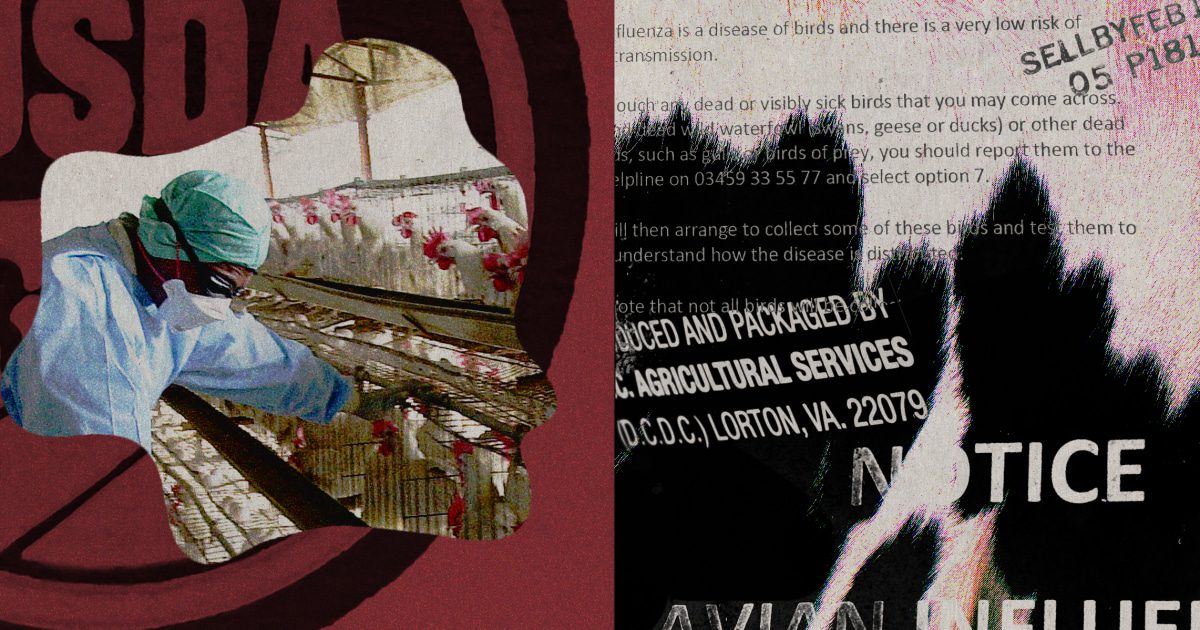
Despite the rising concern over a new strain of bird flu being detected in dairy cattle, three of the leading milk-producing states in the U.S. are not included in federal surveillance testing. This has raised alarms among public health experts, who view this oversight as a significant vulnerability in the national strategy for monitoring the virus’s spread.
In December, the U.S. Department of Agriculture (USDA) launched a voluntary milk-testing initiative following the virus’s transmission to cattle in March 2024. Avian influenza was first identified in the U.S. in 2022, but its recent escalation has severely impacted poultry operations across the nation, resulting in the loss of millions of birds and driving up egg prices.
Although the likelihood of human infection remains low, numerous public health and veterinary experts emphasize the necessity of comprehensive national milk testing to promptly identify cases that could otherwise go unnoticed. Undetected cases may allow the virus to spread to both animals and humans.
Dr. K. Fred Gingrich II, executive director of the American Association of Bovine Practitioners, stressed the importance of a thorough surveillance system, stating, “A robust approach is essential for controlling diseases of national significance.” He believes that widespread testing across all dairies would minimize the chances of undetected outbreaks.
Despite the urgency, major milk-producing states such as Texas, Wisconsin, and Idaho are currently absent from the federal testing program. Efforts are underway to involve them, but timelines remain uncertain.
Texas, which recorded the first known instance of bird flu in cattle and the initial human infection linked to a mammal, has seen cases in dairy cattle as recently as December. However, Agriculture Commissioner Sid Miller downplayed the necessity of surveillance milk testing, asserting that there are presently no active bird flu cases among the state’s commercial cattle or poultry.
Miller stated, “If you look at the number of herds affected, it’s not a significant concern.” He contended that mandating milk testing for bird flu would only introduce “additional regulation, costs, and oversight” without addressing the current threat, emphasizing that vaccine development for cattle should take precedence.
The state’s Animal Health Commission is collaborating with federal authorities to develop a bird flu surveillance program, according to USDA sources.
Just last week, the USDA confirmed the detection of a new strain of bird flu in cattle in Nevada, identified through the federal milk-testing initiative, highlighting the effectiveness of the National Milk Testing Strategy.
The USDA reported that approximately three-quarters of the nation’s milk production is now covered by testing, with nearly 40 states participating in the program, which aims to include all 48 contiguous states.
Since early 2024, one death and at least 68 infections have been recorded in the U.S., primarily among individuals who had close contact with infected animals, as reported by the Centers for Disease Control and Prevention.
Richard Webby, an animal influenza researcher at St. Jude Children’s Research Hospital, noted that milk testing is essential for tracking the evolution of the virus in ways that could pose a greater risk to human health.
“We can identify changes in the virus that might elevate the risk for humans,” he explained.
While pasteurization effectively eliminates bird flu from milk, farmworkers still handle raw milk and come into contact with potentially infected cattle. So far, more than 960 dairy herds have been impacted, with federal regulations mandating testing for all lactating dairy cattle before interstate movement.
Testing involves state and USDA officials analyzing raw milk samples collected from bulk silos, which aggregate milk from various farms before it undergoes processing. The USDA maintains a national laboratory network for bird flu testing, and the federal program stipulates a minimum of four test rounds over six months, with follow-up procedures to trace any positives back to specific farms. Additionally, the USDA offers complimentary testing to individual farmers.
Wisconsin is actively pursuing enrollment in the USDA testing program and is coordinating with state and federal partners to monitor bird flu developments, according to a state agriculture spokesperson.
Idaho did not respond to inquiries but is also currently not part of the program per USDA information.
Health professionals assert that testing can often detect bird flu days before cows show symptoms, enabling farmers to take prompt actions such as quarantining affected animals and testing for potential human exposure.
“Having advance knowledge of the virus’s presence allows us to enhance worker protection,” stated Dr. Kay Russo, a Colorado veterinarian involved in identifying the first bovine bird flu case last year.
“If we lack clarity in certain states, we cannot accurately assess the risk levels,” Russo added.
Testing frequency varies significantly across the country, even among states participating in the USDA program. Some states conduct monthly tests, while Colorado has mandated weekly milk testing at all farms following outbreaks in dairy cattle last year.
“Our testing measures provide reassurance to the poultry and dairy sectors,” noted Dr. Maggie Baldwin, Colorado’s state veterinarian. “We can identify where the virus exists and where it does not.”









